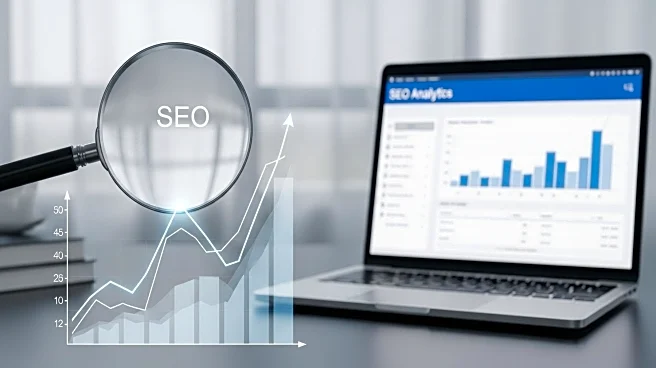What's Happening?
Shopify has detailed the process of SEO forecasting, a method used to predict the performance of organic search efforts over time. This involves analyzing current and historical data to estimate metrics such as organic traffic, conversion rates, and revenue. The process is crucial for e-commerce businesses to understand traffic expectations for key product and category pages, identify potential spikes, and determine which keywords will attract qualified website traffic. Shopify emphasizes the importance of combining first-party data from tools like Google Analytics and Shopify Analytics with third-party data from platforms like Ahrefs and Semrush to enrich insights and identify opportunities.
Why It's Important?
SEO forecasting is vital for e-commerce businesses as it allows them to strategically plan their marketing efforts and optimize their online presence. By predicting traffic and conversion rates, businesses can allocate resources effectively, prioritize technical optimizations, and create new content to maximize organic search performance. This approach helps businesses anticipate seasonal trends and adjust strategies accordingly, potentially increasing revenue and customer engagement. The integration of first-party and third-party data provides a comprehensive view of current performance and future opportunities, enabling businesses to stay competitive in the rapidly evolving digital landscape.
What's Next?
Businesses are encouraged to revisit their SEO forecasts monthly to adapt to changes in the digital environment, including the impact of large language models and AI integration. This regular review allows companies to pivot strategies and capitalize on emerging trends or shifts in consumer behavior. As SEO continues to evolve, businesses must remain agile and responsive to maintain their competitive edge. Shopify suggests using industry benchmarks and seasonal fluctuations to refine forecasts and ensure they align with current market conditions.
Beyond the Headlines
The ethical implications of SEO forecasting involve ensuring compliance with data privacy laws while leveraging data analytics. As businesses increasingly rely on predictive analytics, they must balance innovation with consumer privacy concerns. Additionally, the cultural impact of SEO forecasting highlights the growing importance of data-driven decision-making in shaping business strategies and consumer interactions.










